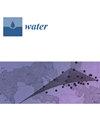比较LSTM和RNN对低陆河概念水文模型的影响,重点关注流量持续曲线
IF 3
3区 环境科学与生态学
Q2 ENVIRONMENTAL SCIENCES
引用次数: 2
摘要
机器学习(ML)算法慢慢地在水文社区内建立了对流量建模的接受。然而,由于集水区的独特性,关于ML模型建模行为的一般有效声明仍然模糊不清。我们将两个ML模型RNN和LSTM与德国低地Ems流域的概念水文模型Hydroiska Byråns Vattenbalansavdelning(HBV)进行了比较。此外,我们在ML模型中实现了一个简单的路由例程,并使用模拟的上游流量作为强制数据来测试单个模型误差是否累积。与HBV模型相比,ML模型在广泛的统计性能指标方面具有优越的模型性能。然而,ML模型显示,其中两个子流域的低流量表现有所下降。采样流量-持续时间曲线的特征指数表明,我们研究中的ML模型很好地代表了水平衡,而HBV模型在再现流量动力学方面具有优势。关于ML模型中应用的路由程序,没有强有力的迹象表明整个子流域从上游到下游的误差不断增加。本文章由计算机程序翻译,如有差异,请以英文原文为准。
Intercomparing LSTM and RNN to a Conceptual Hydrological Model for a Low-Land River with a Focus on the Flow Duration Curve
Machine learning (ML) algorithms slowly establish acceptance for the purpose of streamflow modelling within the hydrological community. Yet, generally valid statements about the modelling behavior of the ML models remain vague due to the uniqueness of catchment areas. We compared two ML models, RNN and LSTM, to the conceptual hydrological model Hydrologiska Byråns Vattenbalansavdelning (HBV) within the low-land Ems catchment in Germany. Furthermore, we implemented a simple routing routine in the ML models and used simulated upstream streamflow as forcing data to test whether the individual model errors accumulate. The ML models have a superior model performance compared to the HBV model for a wide range of statistical performance indices. Yet, the ML models show a performance decline for low-flows in two of the sub-catchments. Signature indices sampling the flow duration curve reveal that the ML models in our study provide a good representation of the water balance, whereas the HBV model instead has its strength in the reproduction of streamflow dynamics. Regarding the applied routing routine in the ML models, there are no strong indications of an increasing error rising upstream to downstream throughout the sub-catchments.
求助全文
通过发布文献求助,成功后即可免费获取论文全文。
去求助
来源期刊

Water
WATER RESOURCES-
CiteScore
5.80
自引率
14.70%
发文量
3491
审稿时长
19.85 days
期刊介绍:
Water (ISSN 2073-4441) is an international and cross-disciplinary scholarly journal covering all aspects of water including water science and technology, and the hydrology, ecology and management of water resources. It publishes regular research papers, critical reviews and short communications, and there is no restriction on the length of the papers. Our aim is to encourage scientists to publish their experimental and theoretical research in as much detail as possible. Full experimental and/or methodical details must be provided for research articles. Computed data or files regarding the full details of the experimental procedure, if unable to be published in a normal way, can be deposited as supplementary material.
 求助内容:
求助内容: 应助结果提醒方式:
应助结果提醒方式:


